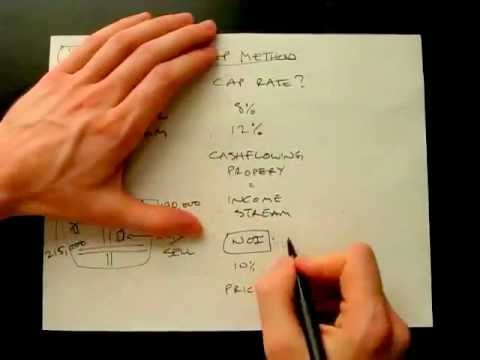Contents:


Generally, a higher risk-reward ratio is preferred because it offers the chance of a higher return on investment without taking excessive risks. An excessive ratio suggests that an investment may be too risky. When trading individual stocks, investors frequently use stop-loss orders to help limit losses and actively manage their investments with a risk/reward focus. Diversifying portfolios is another way investors can manage potential risks and rewards. By identifying key levels of support and resistance, traders can set stop-loss orders at strategic points to limit their downside while still allowing for potential upside gains.
And it’s like a risk reward ratio calculator, which tells you your potential risk to reward on the trade. In addition to being useful for static calculations, R can also be applied to dynamic ones. For example, let’s say that your potential reward decreases over time — for example because you missed your entry price. Now your R has shrunk, giving you a new, higher minimum win rate. The risk-reward ratio calculates the likelihood that an investment or project will generate more money than it will cost.
Understanding Risk-Adjusted Return and Measurement Methods – Investopedia
Understanding Risk-Adjusted Return and Measurement Methods.
Posted: Sat, 25 Mar 2017 17:58:28 GMT [source]
Because in the next section, you’ll learn how to analyze your risk to reward like a pro. Don’t aim for the absolute highs/lows for your target because the market may not reach those levels, and then reverse. But generally, you want to set a target at a level where there’s a good chance the market might reverse from — which means you expect opposing pressure to come in. There’s no such thing as… “a minimum of 1 to 2 risk reward ratio”.
Chart Patterns to Manage Risk and Profit or Loss
The Promotional Offer would always be governed by these Terms of Use plus certain additional terms and conditions, if any prescribed. The said additional terms and conditions, if prescribed, would be specific to the corresponding Promotional Offer only and shall prevail over these Terms of Use, to the extent they may be in conflict with these Terms of Use. The Website reserves the right to withdraw, discontinue, modify, extend and suspend the Promotional Offer and the terms governing it, at its sole discretion.
Any risk/reward decision relies on the quality of the research undertaken by the investor. It should set the proper parameters of the risk and the reward . You just divide your potential loss by the price of your potential profit . A risk/reward ratio that is less than 1 indicates an investment with greater potential reward than risk. Ratios greater than 1 indicate investments with more risk than potential reward.
- The risk/reward ratio is measured by dividing the distance from your entry point to Stop Loss and the distance from your entry point to Take Profit levels.
- It’s fair to say the risk/reward ratio is one of the most important things you should use if you want to become a successful trader.
- A high win rate can help you achieve a better risk to reward ratio.
- Thus the risk-reward ratio of the expected investment is 1 in 2.
- Then I lock in profits as soon as possible with a trailing stop and let the trade run its course.
Post or transmit any file which contains viruses, worms, Trojan horses or any other contaminating or destructive features, or that otherwise interferes with the proper working of the Website or the facilities. We reserve the right to terminate access to this Website at any time and without notice. Further this limited license terminates automatically, without notice to you, if you breach any of these Terms of Use. Upon termination, you must immediately destroy any downloaded and printed Materials. This Website is controlled and operated from India and there is no representation that the Materials/information are appropriate or will be available for use in other locations. If you use this Website from outside the India, you are entirely responsible for compliance with all applicable local laws.
It’s a calculation that measures the potential return on investment compared to the potential loss. To achieve a high win rate, it is crucial to use the ratio to make informed investment decisions. By doing so, traders can minimize potential losses and increase their chances of success. Incorporating chart patterns into your trading strategy can effectively manage your risks while maximizing your profits. Case studies have shown how these chart patterns have been successfully used by traders to achieve profitable trades while minimizing their losses.
The highway technique that improves your risk to reward
Technically, they’re both bad deals, because you shouldn’t sneak around like that. Nevertheless, you’re taking much more risk with the tiger bet for only a little more potential reward. I’ll give you 1.1 BTC if you sneak into the tiger cage and feed raw meat to the tiger with your bare hands.
It would be best if you didn’t rely on the universal R/R ratio in your trading decisions. For every trade, you should determine how many you can afford to lose in a particular trade and how many you can lose today before you finish your trading. The risk to reward ratio (R/R ratio) measures expected income and losses in investments and trades. Traders use the R/R ratio to precisely define the amount of money they are willing to risk and wish to get in each trade. The risk/reward ratio is measured by dividing the distance from your entry point to Stop Loss and the distance from your entry point to Take Profit levels. Possibly not entirely accurate – The investor’s stop-losses and potential profits are used to calculate risk/reward ratios.
- 10 Best Gold ETFs in India to Invest in April Gold ETFs or Gold Exchange Traded Funds are passively managed funds that track the price of physica…
- So let’s say you go into a trade where your stop loss is 10% below entry, and your target price is 40% above entry.
- There are no charges or fees to be paid by you for use of this Website.
- You’ll learn how a high-risk investment with the amount you choose can lead to massive gains or devastating losses, while a low-risk investment may offer more stable but lower returns.
You can use execution platform/services with any third party as deem fit and proper, and there is no compulsion to use the execution services through this Website. Also, it is not mandatory to have a single R/R ratio for every trade. The ratio can be adjusted as per the stock you’re trading and the prevailing market conditions. But avoid picking trades where the risk potential is significantly higher than the profit potential. So, a risk-reward ratio of 1-to-1 indicates that the investor faces the possibility of losing the same amount of capital that they stand to gain through positive returns. They look for the highest potential upside with the lowest potential downside.
How to Make an Informed Decision With a Risk/Reward Ratio?
If you trade ETH or other alts, you must be in tune with the price of BTC. You are advised to consult an investment advisor in case you would like to undertake financial planning and / or investment advice for meeting your investment requirements. The risk-reward ratio does not take into account other factors that impact investment decisions. Most notably, the ratio does not consider the probability of an investment paying off. A more risk-tolerant investor may be willing to accept a ratio that indicates a higher level of risk for the same level of reward, while a risk-averse investor may consider a 1-3 ratio as not worth the investment.

Some trial-and-error methods are usually required to determine which ratio is best for a given trading strategy, and many investors have a pre-specified risk/reward ratio for their investments. The risk/reward ratio is used by traders and investors to manage their capital and risk of loss. The information contained on the Website may have been obtained from public sources believed to be reliable and numerous factors may affect the information provided, which may or may not have been taken into account.
How is the Risk-to-Reward Ratio Calculated?
The pros comb through, sometimes, hundreds of charts each day looking for ideas that fit their risk/reward profile. The more meticulous you are, the better your chances of making money. Remember, to calculate risk/reward, you divide your net profit by the price of your maximum risk.

We may provide you with various money solutions and options which are generally available basis your investment profile or those which are generally held by persons of similar investment profile. You authorize us to use/disseminate the information to provide the Financial Solutions however it is not necessarily for you to act on it. It only serves an indicative use of information which you may execute in the manner agreed by you. To help you for your money needs you can avail the facility of MoneyForLife Planner (‘MoneyForLife Planner/ Planner’).
Risk/Reward Ratio: What It Is, How Stock Investors Use It
In the latter case, expected return is often used in the denominator and potential loss in the numerator. Expected return can be computed in several ways, including projecting historical returns into the future, estimating the weighted probabilities of future outcomes, or using a model like the capital asset pricing model . Information on this Website sourced from experts or third party service providers, which may also include reference to any ABCL Affiliate. However, any such information shall not be construed to represent that they belong or represent or are endorsed by the views of the Facilities Provider or ABC Companies. Any information provided or sourced from ABCL Affiliate belongs to them. ABCL is an independent entity and such information from any ABCL Affiliate are not in any manner intended or to be construed as being endorsed by ABCL or Facilities Provider.
An R below 1 means that you’re risking more money than you’re likely to gain — which is almost always a bad sign. Risk size, measured in percentages, is how much money you’re willing to give up in each losing trade. Thus, the above steps are simply the process of interpreting risk ratio. The risk ratio equation is performed by examining two variables.
We’re also a community of reward to risk ratio formulars that support each other on our daily trading journey. If you were to reduce your position size, then you could widen your stop to maintain your desired reward/risk ratio. It’s important to regularly monitor the risk/return ratio of your investments and adjust your portfolio accordingly to ensure that your investments align with your goals and risk tolerance. Samantha Silberstein is a Certified Financial Planner, FINRA Series 7 and 63 licensed holder, State of California life, accident, and health insurance licensed agent, and CFA. She spends her days working with hundreds of employees from non-profit and higher education organizations on their personal financial plans.
Instead, you must combine your risk-reward ratio with your winning rate to know whether you’ll make money in the long run . Simple to calculate- Investors can easily use the risk/reward ratio to make decisions on the spot because it has a very straightforward formula. Now, let us understand the calculation of financial risk ratio with some examples. Of the trades must be winners for the strategy to be profitable. Remember, the potential reward should always outweigh the potential risk in every trade.
Market volatility refers to how much prices fluctuate in a given period. All information is subject to specific conditions | © 2023 Navi Technologies Ltd. 10 Best Bank for Savings Account in India Savings account is a type of financial instrument offered by several banks. SIP or Systematic Investment Plan is a method of investing a fixed amount in … What is Fixed Deposit – Best FD Interest Rates, Calculations and How to Apply Online Fixed deposits are known to offer guaranteed returns – one of the reasons why they are so pop… Mahila Samman Savings Certificate Scheme -Interest Rate, Benefits and Eligibility The Mahila Samman Savings Certificates, a fixed-income investment programme explicitly launched for…
Now, if you use TradingView, then it makes it’s easy to calculate your risk to reward ratio on every trade. Win rates are a useful way to know how many of the trades we’re making are productive — but combined with R, they’re even more useful. The reason is that we can use R to calculate the minimum win rate we need to get in order to be profitable.
Jane is a freelance editor for The Balance with more than 30 years of experience editing and writing about personal finance and other financial and economic subjects. Let’s take an example to understand the calculation in a better manner. Attempt to decipher, decompile, disassemble, or reverse engineer any of the software, comprising or in any way making up a part of the Website or the facilities.
However, it’s important to remember that managing risks effectively is just as crucial as calculating ratios accurately. Head and shoulders, double tops/bottoms, and triangles are just a few examples of chart patterns that can be used to identify key levels of support and resistance. One effective way to manage your risk and maximize profits is by using chart patterns.
Improving your risk-reward ratio can be achieved through various strategies such as setting stop-loss orders and taking profits at predetermined levels. In real-life scenarios, investors use the risk-reward ratio to make informed decisions about their investments. By calculating their respective ratios, traders can choose which stock offers a better balance between risks and rewards. As such, it’s essential to set appropriate stop loss levels and calculate the risk-reward ratio based on each strategy’s unique characteristics.
What Is The Sharpe Ratio? – Forbes Advisor – Forbes
What Is The Sharpe Ratio? – Forbes Advisor.
Posted: Wed, 14 Dec 2022 08:00:00 GMT [source]
You agree not to use the facilities for illegal purposes or for the transmission of material that is unlawful, harassing, libelous , invasive of another’s privacy, abusive, threatening, or obscene, or that infringes the rights of others. The Website reserves the right to discontinue or suspend, temporarily or permanently, the facilities. You agree that the Facilities Provider/ ABC Companies will not be liable to you in any manner whatsoever for any modification or discontinuance of the facilities.
The expected returns of an investment and the level of risk required to earn those returns are often compared using risk-reward ratios. While most investors aim to make money off of their investments, there is also a chance that they could end up losing some or all of their money. Investors can compare the potential gains and losses of an investment using the risk-reward ratio. The risk-reward ratio is the potential profit or loss of an investment compared to the amount of risk taken. It’s important because it helps investors to determine whether a potential investment is worth pursuing, based on the amount of risk they are willing to take. The ratio measures the potential return of an investment against the potential risk, making it a better investment tool than relying solely on high win rates.
The information provided may therefore vary from information obtained from other sources or other market participants. Any reference to past performance in the information should not be taken as an indication of future performance. The information is dependent on various assumptions, individual preferences and other factors and thus, results or analyses cannot be construed to be entirely accurate and may not be suitable for all categories of users. Hence, they should not be solely relied on when making investment decisions. Any information and commentaries provided on the Website are not meant to be an endorsement or offering of any stock or investment advice.
